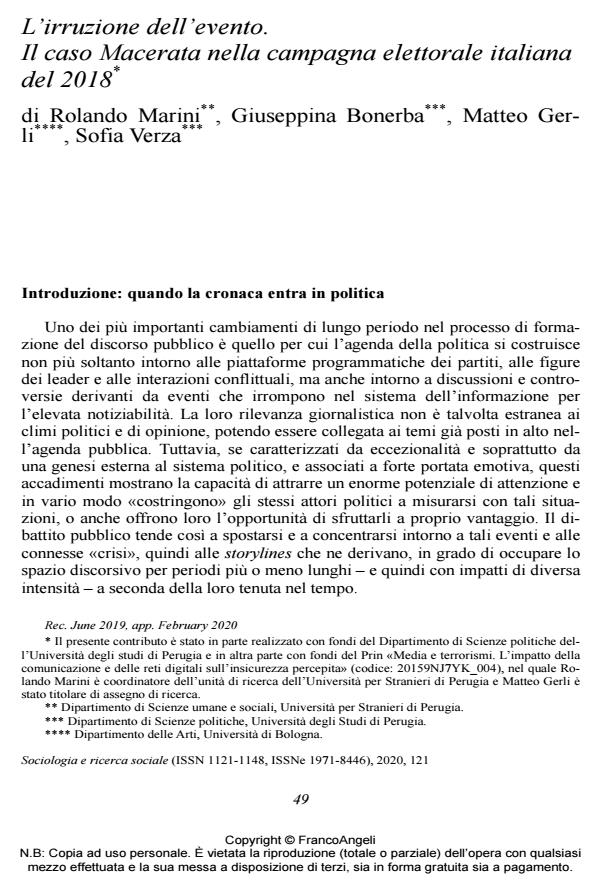L’irruzione dell’evento. Il caso Macerata nella campagna elettorale italiana del 2018
Titolo Rivista SOCIOLOGIA E RICERCA SOCIALE
Autori/Curatori Rolando Marini, Giuseppina Bonerba, Matteo Gerli, Sofia Verza
Anno di pubblicazione 2020 Fascicolo 2020/121
Lingua Italiano Numero pagine 24 P. 49-72 Dimensione file 394 KB
DOI 10.3280/SR2020-121003
Il DOI è il codice a barre della proprietà intellettuale: per saperne di più
clicca qui
Qui sotto puoi vedere in anteprima la prima pagina di questo articolo.
Se questo articolo ti interessa, lo puoi acquistare (e scaricare in formato pdf) seguendo le facili indicazioni per acquistare il download credit. Acquista Download Credits per scaricare questo Articolo in formato PDF

FrancoAngeli è membro della Publishers International Linking Association, Inc (PILA)associazione indipendente e non profit per facilitare (attraverso i servizi tecnologici implementati da CrossRef.org) l’accesso degli studiosi ai contenuti digitali nelle pubblicazioni professionali e scientifiche
The main aim of this study is to investigate the relationship between news reports and the development of a public dialogue about immigration during the 2018 political election campaign. The study examines the way in which news-papers covered a series of dramatic events involving immigrants, which took place in the Italian city of Macerata. The «Macerata case» is analyzed in relation to a trend of evolving media practices characterized by increasing sensational-ism and the systemic assimilation of «permanent campaigning» into news items, demonstrating that political interference in news stories is not a casual or one-off occurrence.
Rolando Marini, Giuseppina Bonerba, Matteo Gerli, Sofia Verza, L’irruzione dell’evento. Il caso Macerata nella campagna elettorale italiana del 2018 in "SOCIOLOGIA E RICERCA SOCIALE " 121/2020, pp 49-72, DOI: 10.3280/SR2020-121003